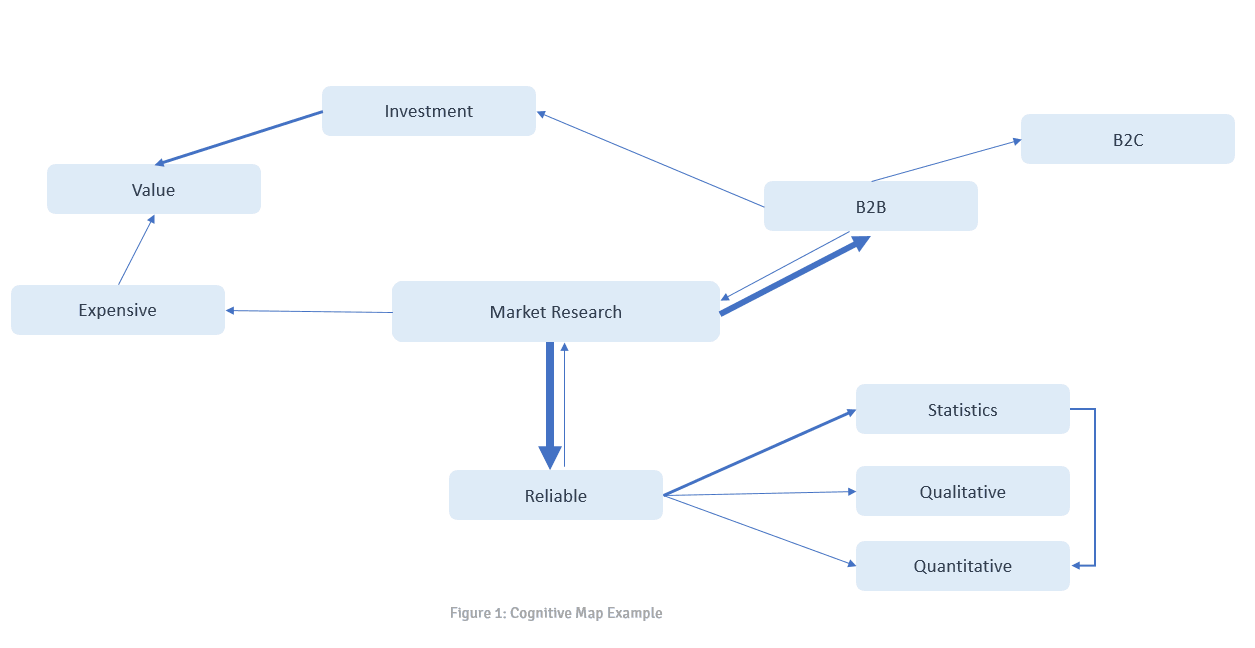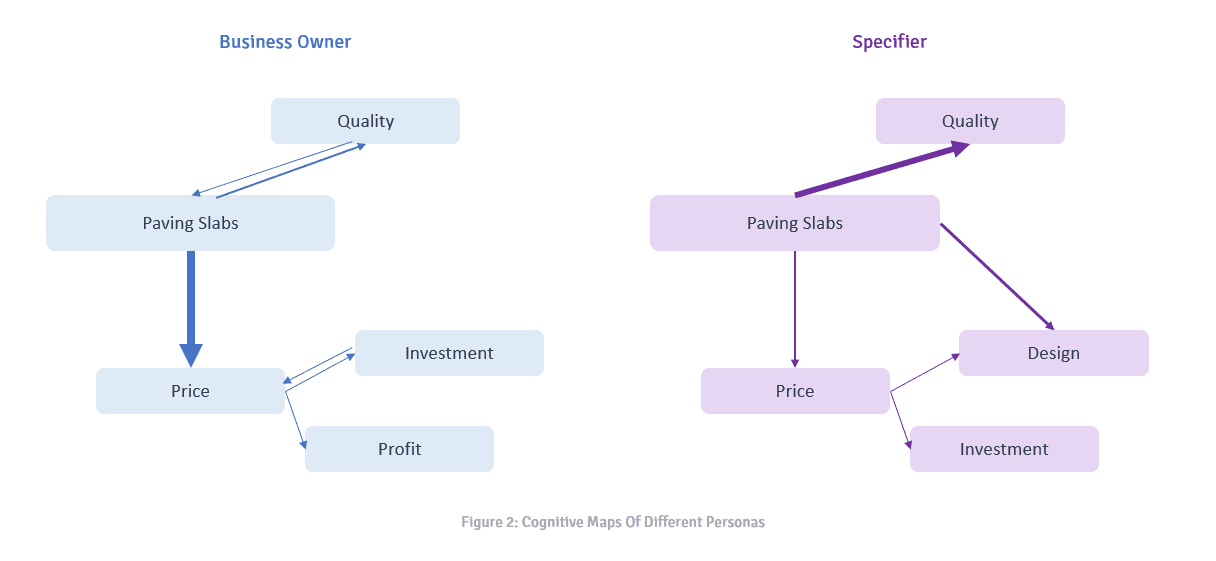Cognitive mapping is a technique that has been used in disciplines such as psychology and sociology for many years to explore the ‘true’ opinions of research participants.
As human beings, we create constructs and attitudes that help us to anticipate our environment, and this is no different in the business environment, as we create these constructs for different brands and services that we might use or receive.



